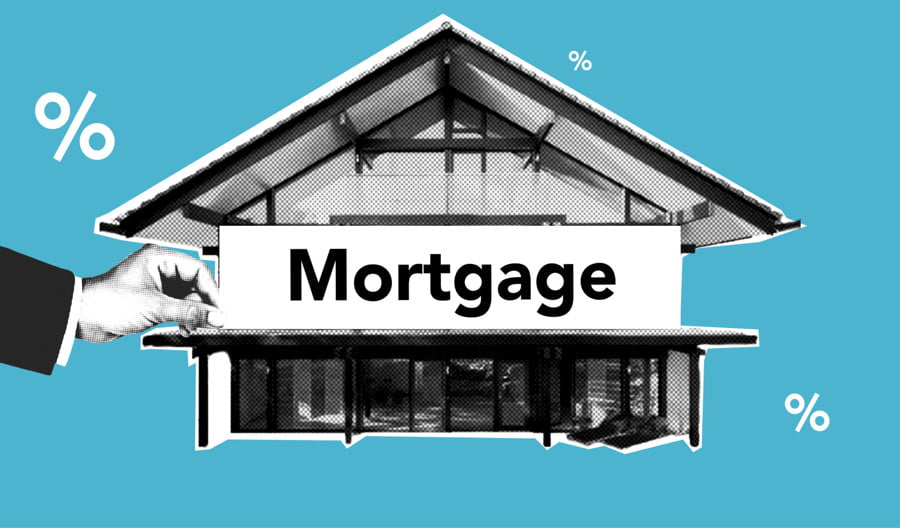As we get older, many of us start to worry about our finances and how we can maintain our standard of living in retirement. It’s a common concern, and one that has led many seniors to consider reverse mortgages. A reverse mortgage can provide a much-needed financial boost, but there are downsides that lenders don’t always disclose. In this article, we’ll explore the hidden fees, lender profits, and other important details that you need to know before you make a decision about reverse mortgages. Whether you’re a senior considering a reverse mortgage or simply interested in learning more about this type of loan, read on to discover the shocking truth about reverse mortgages.
What is a Reverse Mortgage?
A reverse mortgage is a type of loan available to seniors who own their homes outright or have a significant amount of equity in them. It allows them to borrow money against the value of their home while still living in it. Unlike a traditional mortgage where the borrower makes monthly payments to the lender, with a reverse mortgage, the lender pays the borrower in a lump sum, monthly payments, or a line of credit.
One of the biggest advantages of a reverse mortgage is that it can provide seniors with much-needed cash to pay for living expenses, medical bills, or home repairs. It can also be a way to supplement retirement income, especially if other sources of income are insufficient.
Another benefit of a reverse mortgage is that it doesn’t have to be repaid until the borrower dies, sells the home, or moves out. This can be a relief for seniors who are worried about meeting monthly mortgage payments in retirement.
Overall, a reverse mortgage can be a useful financial tool for seniors who need to tap into their home equity to maintain their standard of living. However, as we’ll explore in the next section, there are some downsides to consider before taking out a reverse mortgage.
The Pros of Reverse Mortgages
Reverse mortgages have gotten a bad reputation in recent years due to some negative press and misconceptions about how they work. However, there are some significant benefits to consider before ruling out a reverse mortgage as an option.
One of the most significant advantages of a reverse mortgage is that it allows seniors to access the equity in their homes without having to sell or move out. This can be particularly helpful for those who are facing financial hardship and need to access cash for medical expenses, home repairs, or other unforeseen expenses.
Additionally, reverse mortgages do not require monthly payments, which can be a relief for seniors who are struggling to make ends meet on a fixed income. Instead, the loan is repaid when the borrower dies, sells the home, or moves out. This provides a level of flexibility that other traditional mortgage options do not offer.
While there are certainly downsides to taking out a reverse mortgage, it is important to weigh these against the potential benefits. As we explore in the next section, there are some drawbacks to consider before moving forward with this type of loan.
The Cons of Reverse Mortgages
Despite their potential benefits, reverse mortgages are not without their downsides. Before deciding to enter into this type of loan agreement, it is important to carefully weigh the potential costs and drawbacks. One key consideration is the fact that reverse mortgages come with a variety of fees and expenses that can add up quickly. From origination fees to servicing fees and mortgage insurance premiums, the costs associated with a reverse mortgage can be substantial.
Another potential downside of reverse mortgages is that they can be complicated and difficult to understand. This is especially true for seniors who may not be as savvy with financial matters. As a result, it is important to work with a qualified financial professional who can help explain the terms and conditions of the loan.
Additionally, the amount of money that can be borrowed through a reverse mortgage is limited by factors such as the borrower’s age and the value of their home. This means that those who are hoping to take out a large sum of money may be disappointed by what they are able to secure through this type of loan.
Despite these potential drawbacks, it is important to remember that reverse mortgages can still be an attractive option for seniors who are looking to tap into the equity in their homes. However, it is essential to carefully consider all of the costs and drawbacks before making a decision. In the next section, we will explore some of the hidden fees and costs associated with reverse mortgages.
Hidden Fees and Costs
Reverse mortgages can be a tempting option for seniors who are looking to access the equity in their homes. However, it is crucial to approach this type of loan with caution and a full understanding of the potential costs involved. Hidden fees and costs can add up quickly and eat away at the equity that seniors are hoping to access.
One common cost associated with reverse mortgages is the origination fee, which can be up to 2% of the home’s value. This fee is charged to cover the administrative costs of setting up the loan. In addition, borrowers may also be required to pay for an appraisal, credit report, and other fees.

Another cost to consider is the mortgage insurance premium (MIP), which is required for all reverse mortgages. This fee protects the lender in case the loan balance exceeds the value of the home when it is sold. The MIP can add up over time and reduce the amount of equity that seniors are able to access.
In some cases, borrowers may also be responsible for property taxes and homeowner’s insurance, which must be kept up to date in order to avoid defaulting on the loan. Failure to pay these costs can result in the loan being called in, which can be a devastating blow for seniors who are relying on the equity in their homes.
Before deciding to take out a reverse mortgage, it is important to carefully consider all of the costs and fees associated with the loan. It may be helpful to consult with a financial advisor or housing counselor to fully understand the implications of this type of loan. In the next section, we will take a closer look at the truth about lender profits and how they can impact the overall cost of a reverse mortgage.
The Truth About Lender Profits
It’s no secret that lenders stand to profit from reverse mortgages. After all, they are in business to make money. However, the extent of these profits is often misunderstood by borrowers. While lender profits are not inherently a bad thing, they can significantly impact the overall cost of a reverse mortgage.
One factor that contributes to lender profits is the interest rate. Reverse mortgages typically have higher interest rates than traditional mortgages, which means that lenders earn more in interest over the life of the loan. Additionally, lenders may charge origination fees, servicing fees, and other costs that can add up quickly. These fees are often financed as part of the loan, which means that borrowers end up paying interest on them as well.
Another way that lenders can impact the cost of a reverse mortgage is through the distribution of funds. Depending on the terms of the loan, lenders may require borrowers to take out a certain percentage of the available funds upfront, rather than drawing on them as needed. This can result in borrowers taking out more money than they actually need or want, which can significantly reduce the available equity in their home.
Understanding the truth about lender profits is a crucial part of making an informed decision about whether a reverse mortgage is right for you. As we’ll explore in the next section, there are a variety of factors to consider beyond just the costs and fees associated with the loan.
Is a Reverse Mortgage Right for You?
When it comes to determining whether a reverse mortgage is the right option for you, there are a lot of factors to take into consideration. First and foremost, it’s important to assess your financial situation and long-term goals. Do you have a significant amount of equity in your home that you want to access? Are you struggling to pay bills and could use some extra cash flow? Are you planning to stay in your home for the foreseeable future, or are you considering downsizing or relocating?
Another factor to consider is your eligibility for a reverse mortgage. In order to qualify, you must be at least 62 years old and own your home outright or have a significant amount of equity. Additionally, you must be able to demonstrate the ability to pay property taxes and homeowner’s insurance.
Before making a decision, it’s important to weigh the potential benefits of a reverse mortgage against the costs and risks. While a reverse mortgage can provide a source of income and access to home equity, it can also have significant fees and expenses, as we discussed in the previous section. It’s important to talk to a qualified financial advisor and do your own research to determine whether a reverse mortgage is the right choice for your unique situation.
Understanding the truth about lender profits is just one piece of the puzzle when it comes to reverse mortgages. By taking a careful, comprehensive approach to your decision, you can make an informed choice that aligns with your goals and priorities.
In conclusion, reverse mortgages offer a way for seniors to access funds that can provide financial relief. However, hidden fees and costs, as well as potential downsides, need to be carefully considered before making a decision. Always remember that lenders are in the business of making a profit, and caution and skepticism are necessary when approaching any loan. As you weigh the pros and cons of a reverse mortgage, seek the advice of a financial advisor to ensure that it is the best option for your specific financial situation. Remember, a reverse mortgage is a significant decision, and it deserves careful consideration before signing on the dotted line.











